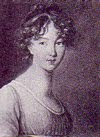As mentioned elsewhere on this
blog, I have met with a lot of difficulty photographing my quilts. This one was a real
challenge. A black and white reproduction Toile de Jouy framed with black
material, all in cotton.
The print is a pastoral one, with
sheep, which makes me think of spring. I love whole cloth quilts and I enjoy
the meditative exercise of hand quilting, even a simple design such as the one
on this quilt, my favourite -
squares on point.
This quilt measures 48” wide by
54” long. The printed section is
40 ½” wide x 46” long. The larger images are approximately 8” tall and 6” wide.
Strictly speaking, this quilt is
not quite a reproduction one as the black border and backing material has a
very subtle black and white pointillist pattern of leaves and vines on it.



















